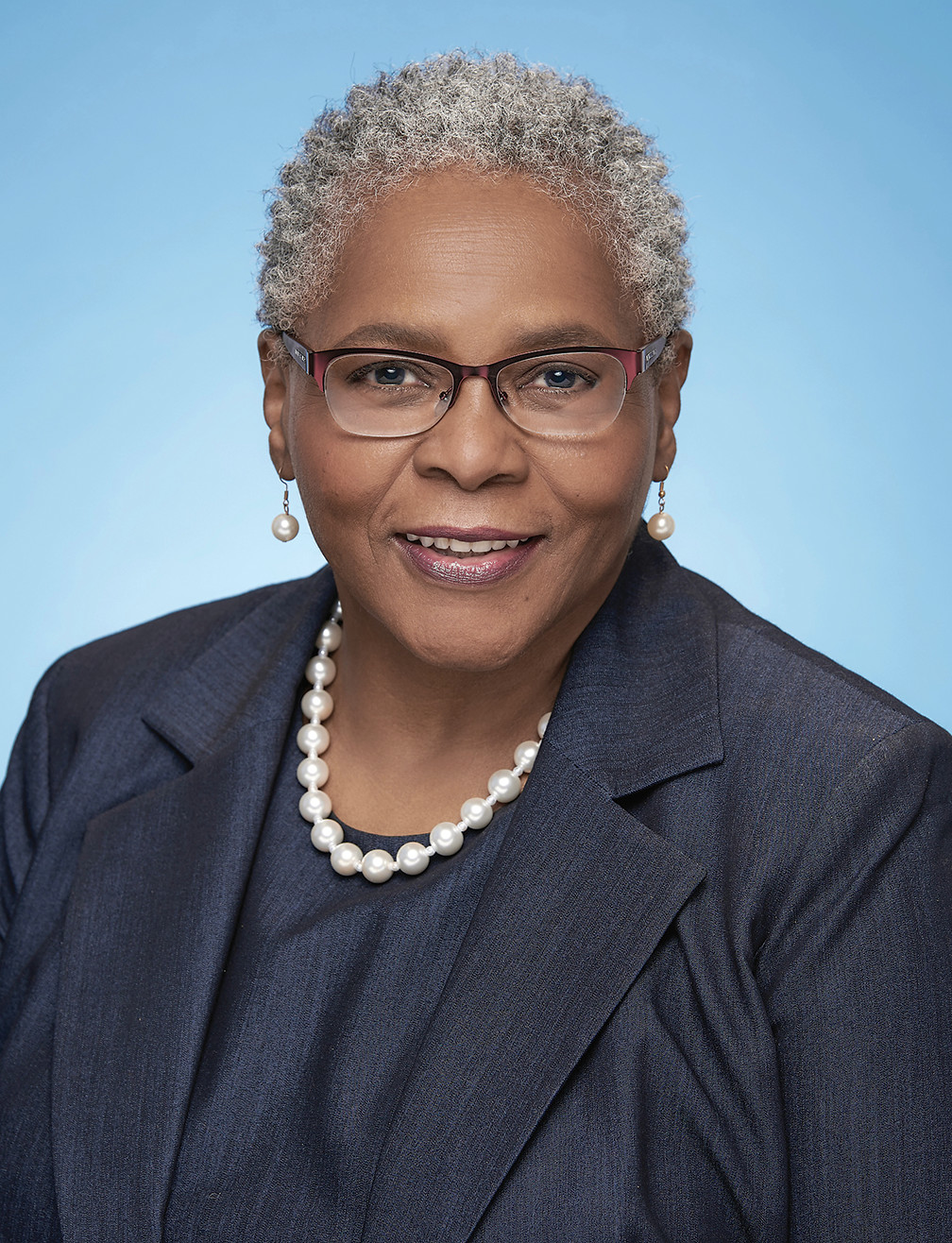Thank you all for that warm welcome.
And thank you Norman for that wonderful and touching introduction.
Now y’all can see why I’m so optimistic about the future of our profession. It’s wonderful to see all your faces this afternoon and to be able to address you one last time, as I wind up my presidential year here in San Francisco.
And, what a year it has been. There have been so many moments as I’ve traveled around the country or when I’ve heard from you over the telephone or by e-mail in which you have inspired me. Your contributions to this organization and the field have energized my time as President, and for that I am truly grateful. It has also been wonderful to work with this Board of Trustees, as well as Saul and his administrative team, who have served as great partners in what I have tried to accomplish.
As we look back at the past 175 years, it’s clear that APA has an impressive history. When we started 175 years ago, when those 13 guys got together in Philadelphia, it took some time, but basically they said: There’s a more humane way to treat people with mental illness.
And that’s the North Star that should always guide us.
We’ve had times in our past when we’ve drifted from that core mission—but now we’re back, reasserting the role of humane treatment in a way that meets the needs of each individual patient.
The resources may have changed–we’re not just talking about farms, wide-open spaces, and working with our hands to feel better. Today, we’ve got modern technology. Even the most seriously mentally ill person generally navigates a telephone well enough to get reminders about medication or appointments. But when you think about it, we’re using the resources we have today to provide humane treatment similar to the way we did 175 years ago. It’s different, but it’s good to know we’re back to our original mission: to get the appropriate and best possible care to people at the time that they need it. As psychiatrists, we recognize that we work with people—we don’t work with the illness, we don’t cut it out, we don’t measure it in a lab test—we are the specialists in medicine who actually consider the whole person. That is one of the things that distinguishes us from the rest of the house of medicine—we really see and work with the person, not just the disease.
Last year, when I spoke to you at the annual meeting in New York, I told you about the three areas that I would focus on during my presidency: expanding APA’s work in global mental health, embedding diversity and inclusion principles and practices for treatment and professional development into our field to address the “social issues” that impact the mental health of Americans, and developing meaningful interactions with trainees and early-career psychiatrists to support their movement into leadership roles. Looking back, I am proud to say that many of you have worked with me on these areas, and I believe we’ve built momentum that will move us forward positively into the next 175 years.
When I think about what we did to expand our reach around the globe with colleagues in the mental health arena, it starts with the idea of being strategically engaged. We made decisions based on the world’s largest psychiatric society being at the forefront of understanding the significance of a psychiatric disorder topping the list of disorders responsible for the global burden of disease. Advancing mental health care and keeping mental illness front and center has to be our goal, at home and abroad. We didn’t get stuck in the politics of the specific issues; instead, we looked at the impact on mental health and well-being and took well-timed and well-conceived steps to lend our voice to addressing those issues.
Early in the year, we, and many other Americans, were stunned at the news of what was happening at our southern border, where children and families were being separated. It was an APA member, Dr. Pamela McPherson, that first made us all aware that this policy was in place and spoke out against it. Because we as psychiatrists knew very well the short- and long-term trauma that policy would inflict on the children and families involved, we decided to step up. The APA was one of the first medical organizations to condemn the policy, made it part of our advocacy work, and became actively engaged in helping our colleagues who were working on the border. We collaborated with partners to ensure that those children and families impacted would receive evidence-based care. And we kept working on changing the policy, even as the country’s attention to the issue waned.
Another important way the APA ramped up its global efforts this year was in the sharing of information and support to our international colleagues in times of natural disasters and tragic or violent incidents. In fact, you can now access CME sessions and other resources so that we can all learn about these topics, which we are sharing internationally, so all of us practitioners can have access.
And in one of my last official acts as your President, I was honored to be part of APA’s delegation to the United Nations for the multistakeholder meeting on Universal Health Coverage, where the health and mental health needs of vulnerable populations around the world and solutions for addressing them were discussed.
We also joined some new coalitions this year in which we can offer our important voice on matters that affect mental health. You may have heard of a group called AFFIRM, the American Foundation for Firearm Injury Reduction in Medicine. The APA joined this effort alongside many of our medical colleagues in the hopes that we’ll be able to add to the dialogue that’s happening around the world about gun violence from a research perspective. From my perspective, we have done a fabulous job of both sharing information with our international colleagues and aligning our interests and goals with other groups globally.
Now, as much as we engaged outward, we did some introspection as a field this year as well. We made some progress on the issues of diversity, equity, and inclusion. I know that many believe that the election of the first black President means we achieved a major milestone, but let’s not get too comfortable. I would submit it is a great first step and visible sign of the ultimate goal for this organization in the area of diversity and inclusion. It has been an overwhelming experience to meet gender and ethnically diverse members, young and old, who whisper how proud they are of me and how I have opened the door to possibilities within the organization to people that look like me. There is also generally a comment or two about how hard they know it must have been to push forward against a professional culture that has experienced challenges over the years in how minority and underrepresented group members are engaged and participate in the organization.
I count it among our biggest accomplishments of the past year that there was a real explosion of people who were out there, either presenting, writing, or, in some other way, making sure that this issue of diversity, equity, and inclusion was being addressed. I hope I am a real-world example of the importance of talking about and doing these things, and how to do it. I’m so pleased to have been here at this time in our history to encourage the dialogue, when history has its eyes on us.
What I sincerely hope is that that urgency, thought, and action around diversity, equity, and inclusion has been firmly embedded in the core work of the APA. That old refrain of “we can’t find someone with the necessary skill or expertise that is (fill in gender, race, or ethnicity),” is no longer acceptable. There is diverse subject matter expertise available in all areas of psychiatry today—academia, clinical care, research, organized health systems, governmental mental health systems—we have to be intentional in looking for it and include those individuals in our work to improve psychiatric services going forward. Everything we do as an organization must reflect our commitment to diversity, equity, and inclusion in the services areas, as well as in professional development. We owe it to the future of the field to begin this work now so that we are prepared to do our best work for all those needing psychiatric care.
And let me say publicly so there is no misunderstanding, promoting diversity, equity, and inclusion is everybody’s work, not just that of our minority and underrepresented members. Everyone needs to be invested to keep our progress moving. Ultimately, when there is diversity in leadership—not just the presidency, but the leadership as a whole—we are a better organization for all of our members and for the patients we serve.
Most of the young psychiatrists entering the profession understand this, and I hope they’ll help us figure out how to make the mental health care delivery systems more equitable, diverse, and high quality to meet the needs of all the individuals we serve. I know it won’t be easy. We will need to offer mental health care in a way that’s appropriate for our patients’ cultural perspectives at any point in the process, whether it’s how they seek help, how we provide the help, how they respond to help, or how we research treatments that offer help.
We can’t have a system of care in mental health that says generic treatment works for everybody, and then we’ll tack on different things based on a person’s cultural background. We must have treatment based on an understanding of their needs and ask questions and include them when we need to in order to appropriately address their needs. That is the cornerstone of patient and community engagement.
And I would remind everyone that we have a blueprint for what APA must do. It first appeared in the December 1970 American Journal of Psychiatry as a special section, edited by Dr. Melvin Sabshin, who’d go on to become medical director of the APA for more than 20 years. It was called “Dimensions of Institutional Racism in Psychiatry.” It is filled with references to what APA and American psychiatry needed to do to understand the needs of the diverse membership and minority populations we served at the time. It was right after the group of black psychiatrists walked into a BOT meeting demanding change in 1969 and changing forever the landscape of American psychiatry. I have reread that section several times over the past year, along with the APA’s strategic plan for insight into what remains to be done to fully implement our plan relative to the item on diversity. Our young colleagues are today’s change agents, the young lions if you will, and we need to support them in their efforts to make diversity and inclusion in psychiatric treatment and workforce a reality.
Now, let’s talk more about those young lions. Last year, I was intentional in inviting our younger colleagues—our trainees, residents, fellows, and early-career psychiatrists—to become involved in the American Psychiatric Association. And I have been encouraged by the level of positive response to that invitation. Our young people are working all over the organization, and I am over the moon. Watching them become involved in the APA has truly been one of the highlights of my year.
Many of our young colleagues became involved at the district branch level, while some asked for support to work at the national level. All of them want to learn, they want to stretch themselves, and they want to work alongside seasoned members. And it was good to hear some gratitude from more senior members of the APA as well, who reached out to say thank you for calling these young people to action. It wasn’t always smooth, but I’m pleased to say that we tapped into their energy and spirit, as they are our future. They showed me this year that they will serve the APA well going forward.
Now, it’s all contingent on whether APA can find ways for our young people to stay engaged at both the local and national levels. Stop by the Innovation Zone, and you’ll see they are the ones who are bringing ideas centered around the digital world to improve the quality of care and help us elders navigate the generational digital divide. But a lot will depend on how our young people approach this work and how impatient they are with us for not getting there faster.
So, a few words of advice for you young lions: temper your enthusiasm with the understanding that change does take some time, and do not give up when things don’t happen immediately. Stay engaged, and don’t let momentum die down for your ideas. And to my seasoned colleagues, remember to do what you can to keep these talented young folks engaged. Be the mentors I know you can be, and stay open to new ideas. Remember how you felt when you were 20, 30, or 40 years younger, and be patient and encouraging.
When I think about the enthusiasm of these junior colleagues and the incoming leadership of Dr. Bruce Schwartz, I know the APA is in capable hands this next year. Dr. Schwartz, thank you for your counsel this year, and if you need anything from me, don’t hesitate to ask. I know you will have a great year, and I hope that you enjoy the journey as much as I have.
So, as this historic meeting begins, I will leave you with the few things I’m most excited about for our future. I’m very excited about the role that we are beginning to see that technology and understanding digital medicine will offer us in terms of improving the quality of care and improving access to care. I’m totally excited as a community psychiatrist about the fact that we are focusing more of our attention, more of our training, more of our professional development on understanding the impact of social determinants of mental health and actually seeing the role for psychiatry in addressing those things. And finally, I think the future of psychiatry will embody all of the best that we have to offer around collaborative care, psychiatry, and its rightful place in the house of medicine, and a next generation of practitioners who are going to lead the way on how to make use of technology have a moral compass that is driven by the sense of social justice and equity in health care and behavioral health care and possess a desire to enjoy the profession.
APA will continue working to assure you are not overwhelmed by regulations and other things that limit our ability so we can all see the possibility for expanding what we do to improve the quality of care that’s provided. More and more, we are “in the room where it happens,” and I know we will all work to make sure we continue to be advocates for our patients and the profession.
Finally, as I leave office at the end of this meeting, I want to paraphrase one last Hamilton reference from the song “One Last Time”: “I hope you will remember with kind indulgence my efforts to move the needle in those areas where I poured my energies to serve the needs of this organization and all its members, more than any unconscious missteps I may have made.”
Thank you for allowing me the honor of serving as the 145th President, and happy birthday to our APA on its 175th birthday.


